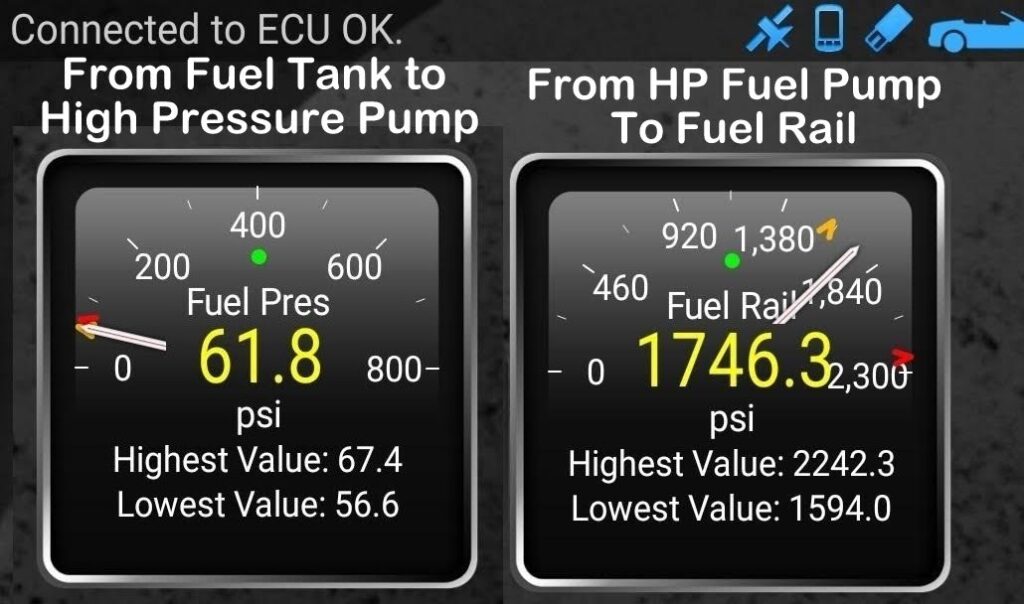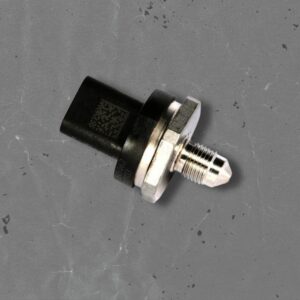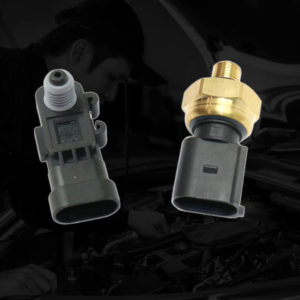Injection control pressure sensors play an important role in determining how smoothly your vehicle’s engine operates and its reliability. Despite its significance, it’s not a very well-known component.
What Is An Injection Control Pressure Sensor?
Note: The fuel rail pressure sensor (FRP) is what this article is about and is used by common rail systems, whether they be GDI or diesel.
The injection control pressure sensor (ICP) moniker is more commonly used on Power Strokes and any other diesels with HEUI injectors that are oil-driven and refers to the oil pressure provided to the injectors by the high pressure oil pump. There is a solenoid in the high pressure oil pump to tune the pressure based on ICP sensor input, but oil rail pressures (which is what the ICP is about) usually run quite a bit lower (1500-3000 psi) than fuel rail pressure on common rail systems, which runs from 3600 psi to about 26000 psi.
The pressure in the common rail is supplied by the high pressure fuel pump, which is driven by the camshaft, and the high pressure pump has a solenoid that controls the pressure output of the pump.
This makes the ICP or the fuel rail pressure sensor (FRP) one of the most critical components of any fuel system because common rail diesel engines and GDI, which is also common rail, have specific parameters in which they operate. If the ICP or FRP sensor fails to record fuel pressure accurately, the ECM/PCM might fail to properly control the pressure delivered to the common rail, which will result in driveability issues.
Signs of a Bad Injection Control Pressure Sensor
Some of the indicators of a bad injection control pressure sensor sensor include an illuminated check engine light, starting problems, poor fuel economy, acceleration problems, and engine stalling or misfiring.
Illuminated Check Engine Light
Inaccurate readings from a malfunctioning ICP sensor may cause engine performance issues that could cause the vehicle computer to log an error and activate the check engine light.
If the sensor is reading lower than the true pressure, the fuel control solenoid on the pump may deliver a pressure that is too high. If it is reporting a pressure that is lower than actual pressure, the fuel control solenoid may not deliver enough pressure.
Engine Struggles to Start
If your vehicle takes longer to start, plug in a scan tool and see what your fuel rail pressure is.

Poor Fuel Economy
A bad ICP or FRP sensor may cause your fuel system to deliver too much or too little fuel to the combustion chamber. Burn too much fuel, and you’ll be making more frequent trips to the gas station. The costs of these trips can add up, so it’s important to address the problem as soon as possible.
Issues With Acceleration
A failed ICP or FRP sensor won’t be able to transmit signals properly. This means data received by other components will be inaccurate, often causing loss of vehicle power and poor acceleration.
Engine Stalls and Misfires
Performance issues attributed to a bad ICP or FRP sensor may cause your engine to randomly stall and fail while driving, leaving you exposed in the middle of the road. Stalling and misfiring increases your risk of getting into a car crash since you may lose power and control over your vehicle.
How to Replace the Injection Control Pressure Sensor
If you’ve singled out the ICP or FRP sensor as the root cause of the problems you’ve had with your vehicle, it’s a good idea to replace it as soon as possible.
Replacing it can be tricky for the uninitiated but it’s not an impossible task. Here’s what the process might involve:
- Determine the location of the FRP / ICP sensor.
- Disconnect your vehicle’s battery to prevent electrical accidents.
- Lift the vehicle with jack stands if necessary.
- Disconnect the connector from the ICP sensor.
- Remove the ICP sensor from its mount or housing.
- Install your replacement ICP sensor and secure it in its mount or housing.
- Lower the jack stands and test your new sensor.
While it is possible to complete the process on your own, it may be better to hire a professional to do the job for you. Mechanics have all the tools and know-how needed to conduct the replacement safely and effectively.
FRP and ICP Sensor Locations
The location of an ICP or FRP sensor varies depending on the make and model of your vehicle but is typically always found on the fuel rail. The injector control pressure sensor on HEUI engines will be on the oil rail, which is typically part of the cylinder head.
Injection Control Pressure Sensor 7.3 Location
The ICP sensor on a 7.3 Powerstroke engine can typically be found on the cylinder head on the driver’s side of the vehicle. This is near the front of the engine compartment. If you’re struggling, it can be found on the driver’s side of the oil rail near the high-pressure oil pump.
Injection Control Pressure Sensor 6.0 Location
The ICP sensor on a 6.0 Powerstroke engine can typically be found behind the turbocharger. However, some models will have it on the passenger side valve cover.
DT466 Injection Control Pressure Sensor Location
You can typically find the ICP sensor on a DT466 engine close to the back of the engine on the high-pressure oil rail, near the valve cover gasket.
Any information provided on this Website is for informational purposes only and is not intended to replace consultation with a professional mechanic. The accuracy and timeliness of the information may change from the time of publication.







































